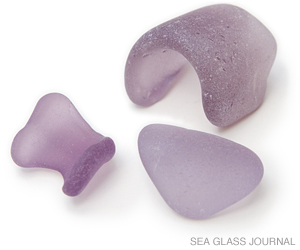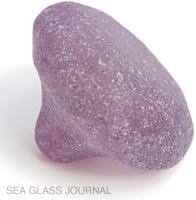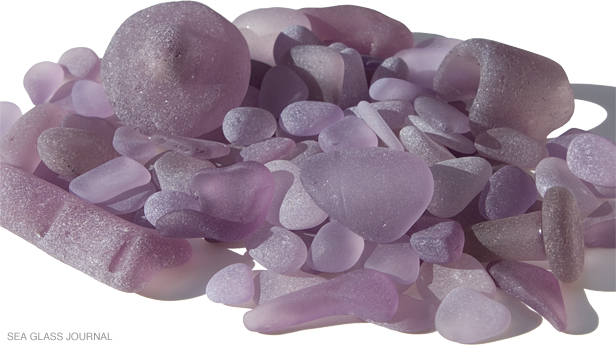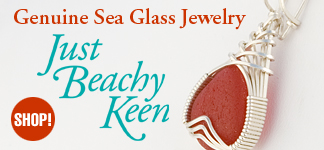
Sea glass bottle tops from around the turn of the 20th Century.
Sun-Colored Sea Glass
Amethyst sea glass, originally clear glass, colored by the sun
Have you ever found a piece of sea glass that had a light purple or amethyst tint to it? Have you ever wondered where this glass came from? Well, believe it or not, it started out as clear glass, used in a variety of applications from beverage bottles, food containers, decorative tableware, door knobs, car windshields and more.
The most basic recipe used for making common glass is a silica sand, soda ash and limestone mixture referred to as soda-lime glass. Without the introduction of a clarifying agent this type of glass would have a light green-blue tint due to the iron impurities found in the sand. Many elements have been used to decolorize glass but from the late 19th Century to the 1920s a compound known as manganese dioxide was commonly used.
Story continues below...

An old clear glass door knob colored amethyst by years of exposure to UV light.
Throughout history manganese was used in high concentrations to intentionally give glass an amethyst to purple color. Used in small amounts manganese would provide just enough purple tint to the raw glass to counteract the green hue from the iron, resulting in clear glass. Early in the 20th Century other compounds gained popularity as clarifying agents as they were more effective in the mass-produced bottle making process[1].
It was later observed that glass containing manganese began to change from clear to an amethyst color, most notably in the sunny Southwest. It was soon realized that the manganese, when exposed to the UV light from the sun, caused the amethyst tint. Glass left out in the sand or placed in windows in the southwest commonly resulted in this amethyst tint which led to this type of glass being called sun-colored amethyst or desert glass. The intensity of the amethyst tint was dependent on the amount of manganese used in the original glass mixture and how much exposure the object had to the sun.
"It was later observed that glass containing manganese began to change from clear to an amethyst color..."
So the next time you discover a piece of sea glass with that sun-colored amethyst tint you will understand that the shard is not only very old but nature had more involvement in its creation beyond the usual conditioning and frosting associated with sea glass.

Glass from bottles, tableware and other sources containing manganese dioxide creates sun-colored amethyst sea glass when exposed to the sun over time.
REFERENCES:
1. http://www.sha.org/bottle/colors.htm






